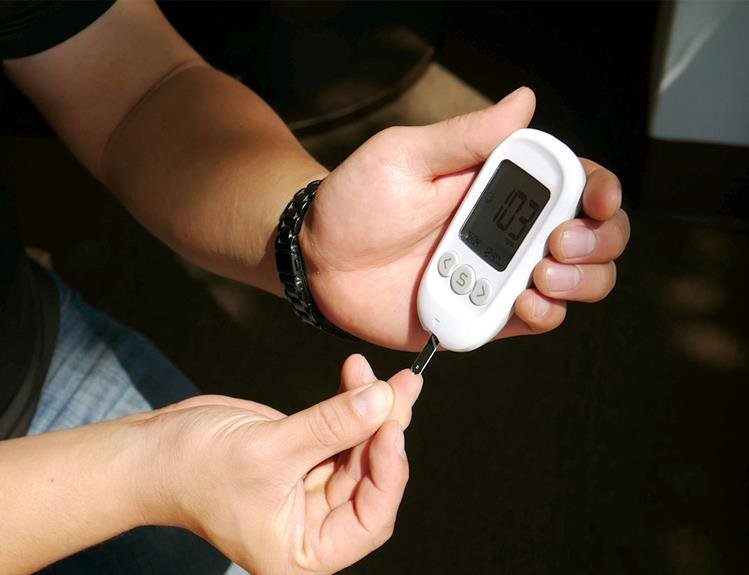Preventing Amputation in Diabetic Patients: Expert Insights
When it comes to diabetes, the risk of amputation can be a looming concern for many. But what if there were strategies that could significantly reduce this risk?
Expert insights on preventing amputation in diabetic patients offer valuable guidance that could make a real difference in your health outcomes.
From simple yet crucial foot care practices to the importance of collaboration with healthcare professionals, there are key steps you can take to safeguard yourself from this serious complication.
Stay tuned to discover these essential tips and take control of your diabetic care.
Importance of Foot Care
To prevent serious complications, prioritize daily foot care as a crucial aspect of managing diabetes. As a diabetic, you must understand the importance of taking care of your feet. Due to reduced blood flow and nerve damage associated with diabetes, your feet are particularly vulnerable to infections and injuries.
Simple tasks like inspecting your feet daily for any cuts, blisters, or sores can go a long way in preventing these issues from escalating. Make sure to wash your feet gently every day, ensuring you dry them thoroughly, especially between the toes. Moisturizing your feet can help prevent dry skin and cracking.
Additionally, always wear well-fitting shoes and clean, dry socks to protect your feet from potential damage. By incorporating these habits into your daily routine, you can significantly reduce the risk of developing foot ulcers, infections, and other complications that could lead to serious consequences like amputation.
Your feet deserve this attention and care to keep you healthy and mobile.
Monitoring Blood Sugar Levels
To keep your blood sugar levels in check and prevent complications, make sure to regularly monitor your glucose levels.
Utilizing continuous glucose monitoring systems and blood sugar tracking devices can help you stay on top of your diabetes management.
Regular Glucose Level Checks
Monitoring blood sugar levels regularly is crucial for preventing amputations in diabetic patients. By checking your glucose levels consistently, you can detect any fluctuations early on and take necessary actions to keep them within a healthy range.
This proactive approach helps in preventing complications like neuropathy and poor circulation, which are common culprits leading to amputations in diabetic individuals. Make it a habit to monitor your blood sugar levels as advised by your healthcare provider.
Keeping a log of your levels and discussing any concerns or patterns with your healthcare team can aid in better management of your diabetes. Remember, staying proactive with regular glucose level checks is key to protecting your feet and overall health.
Continuous Glucose Monitoring
Regularly keeping track of your glucose levels through continuous monitoring is a proactive approach that can significantly benefit diabetic patients in preventing complications like neuropathy and poor circulation that may lead to amputations.
Continuous glucose monitoring involves using a tiny sensor inserted under your skin to measure glucose levels in the fluid between your body's cells. This method provides real-time data, helping you understand how your body responds to different foods, activities, and medications.
Blood Sugar Tracking Devices
Using a blood sugar tracking device can provide you with valuable insights into your glucose levels throughout the day. These devices offer a convenient way to monitor your blood sugar levels, allowing you to make timely adjustments to your diet, medication, and lifestyle. By tracking your blood sugar levels regularly, you can identify patterns and trends, helping you and your healthcare provider make informed decisions about your diabetes management.
These devices come in various forms, including continuous glucose monitors and glucose meters, offering different features to suit your needs. Regularly checking your blood sugar levels with these devices can help you maintain better control over your diabetes and reduce the risk of complications such as foot ulcers that may lead to amputation.
Regular Medical Check-ups
How frequently should you schedule medical check-ups to prevent amputation in diabetic patients?
Regular medical check-ups are crucial for diabetic patients to monitor their foot health and prevent complications that could lead to amputation. It's recommended that diabetic patients schedule check-ups at least once a year with their healthcare provider.
However, individuals with poor blood sugar control, a history of foot ulcers, or other risk factors may need more frequent visits, possibly every three to six months. During these check-ups, healthcare providers will assess the overall health of your feet, check for any signs of nerve damage or poor circulation, and provide guidance on proper foot care.
Additionally, they may conduct tests to evaluate your risk of developing foot ulcers or infections. By staying proactive with regular medical check-ups, you can catch any potential issues early and take the necessary steps to prevent amputation.
Proper Wound Management
To effectively prevent amputation in diabetic patients, proper wound management is essential for promoting healing and reducing the risk of complications. If you have a wound, it's crucial to keep it clean and properly dressed. Clean the wound gently with mild soap and water, and then apply an appropriate dressing to protect it from infection.
It's important to change the dressing regularly as instructed by your healthcare provider to ensure the wound stays clean and healing progresses smoothly. Additionally, monitoring the wound for any signs of infection, such as increased redness, swelling, warmth, or drainage, is vital. If you notice any concerning changes, seek medical attention promptly to prevent further complications.
Remember to follow your healthcare provider's recommendations for wound care to optimize healing and reduce the likelihood of amputation. Proper wound management plays a significant role in the overall treatment and prevention of diabetic complications.
Avoiding Smoking and Alcohol
Avoiding smoking and alcohol significantly contributes to reducing the risk of complications in diabetic patients.
Smoking narrows blood vessels, reducing blood flow to the extremities, making it harder for wounds to heal. Additionally, smoking weakens the immune system, making diabetic individuals more susceptible to infections.
Alcohol, on the other hand, can cause fluctuations in blood sugar levels and lead to nerve damage, increasing the risk of foot ulcers and amputations.
By avoiding smoking, you help improve blood circulation, ensuring that essential nutrients and oxygen reach your tissues, promoting wound healing. Quitting smoking also decreases inflammation in the body, reducing the risk of developing cardiovascular complications associated with diabetes.
Similarly, limiting alcohol consumption helps stabilize blood sugar levels, lowering the chances of encountering diabetic complications that may lead to amputations.
Incorporating healthy lifestyle choices like avoiding smoking and limiting alcohol intake can have a profound impact on your overall health as a diabetic individual. By making these changes, you take proactive steps towards preventing severe complications and safeguarding your well-being.
Maintaining Healthy Lifestyle Habits
To maintain healthy lifestyle habits, focus on balanced diet choices, exercise routines, and consistent monitoring of your blood sugar levels.
By prioritizing these aspects, you can significantly reduce the risk of complications associated with diabetes and potentially prevent the need for amputation.
Remember that small, consistent efforts in diet, exercise, and blood sugar management can make a big difference in your overall health and well-being.
Diet and Nutrition
Maintaining a healthy diet rich in nutrients and low in added sugars is crucial for diabetic patients looking to prevent amputation. Focus on consuming a variety of colorful fruits and vegetables, lean proteins, whole grains, and healthy fats.
Limit intake of processed foods, sugary beverages, and high-fat dairy products. Monitor your carbohydrate intake to help manage blood sugar levels effectively. Opt for complex carbohydrates like whole grains, legumes, and vegetables over simple sugars.
Be mindful of portion sizes to avoid overeating, which can lead to weight gain and negatively impact your blood sugar control. Consulting with a registered dietitian can provide personalized guidance on creating a balanced meal plan tailored to your specific needs.
Regular Exercise
Engaging in regular physical activity plays a vital role in managing diabetes and reducing the risk of amputation. Exercise helps improve blood sugar control, increase insulin sensitivity, and lower the chances of developing complications that could lead to amputation.
Aim for at least 150 minutes of moderate-intensity aerobic activity per week, such as brisk walking, cycling, or swimming. Additionally, incorporating strength training exercises two to three times a week can help build muscle mass, improve circulation, and enhance overall physical function.
Remember to consult with your healthcare team before starting any new exercise regimen, especially if you have existing foot problems or neuropathy. Stay consistent with your workouts to reap the long-term benefits of a healthier lifestyle.
Monitoring Blood Sugar
Regular exercise is crucial for managing diabetes and reducing the risk of amputation; now, let's focus on monitoring your blood sugar to maintain healthy lifestyle habits.
Consistent blood sugar monitoring is essential in managing diabetes effectively. By regularly checking your blood sugar levels, you can identify patterns, make necessary adjustments to your diet, medication, or activity levels, and prevent complications.
Aim to monitor your blood sugar as recommended by your healthcare provider, typically several times a day or as advised based on your individual needs. Keep a log of your readings to track changes over time and share them with your healthcare team during check-ups.
Recognizing Early Warning Signs
To identify potential problems early, pay close attention to changes in your feet if you have diabetes. Early warning signs of foot issues can help prevent serious complications like amputation. Look out for redness, swelling, cuts, sores that are slow to heal, blisters, ingrown toenails, and changes in skin color or temperature. If you notice any of these signs, consult your healthcare provider promptly.
Regularly inspect your feet, including the bottoms, sides, and between the toes. Use a mirror or ask for assistance if you have trouble seeing all areas. Keep your feet clean and moisturized but avoid putting lotion between your toes to prevent infections. Wear well-fitting shoes and socks to prevent blisters and sores. Avoid going barefoot, even indoors, to reduce the risk of injuries.
Collaborating With Healthcare Professionals
Collaborate closely with your healthcare provider to effectively manage your diabetes and prevent complications related to foot health. Regular check-ups with your healthcare team are crucial in monitoring your blood sugar levels and addressing any issues early on. By working together, you can develop a personalized care plan that includes proper foot care techniques, lifestyle modifications, and medication management.
Open communication with your healthcare professionals is key. Make sure to inform them about any changes or concerns you have regarding your feet. They can provide valuable guidance on how to prevent wounds or infections that could lead to more serious complications. Additionally, your healthcare team can help you stay motivated and accountable in following through with your treatment plan.
Frequently Asked Questions
How Can Diabetic Patients Prevent Infection in Wounds on Their Feet?
To prevent infection in wounds on your feet as a diabetic, clean them daily with mild soap and water, apply antibiotic ointment, cover with a bandage, and monitor for any signs of redness or swelling.
Are There Specific Types of Shoes That Diabetic Patients Should Wear to Prevent Foot Complications?
When you're diabetic, choose shoes with roomy toe boxes, good arch support, and cushioning to prevent foot issues. Avoid high heels or tight shoes. Regularly check your feet for any signs of redness, blisters, or sores.
What Role Does Exercise Play in Preventing Amputation in Diabetic Patients?
So, you want to dodge the dreaded amputation? Well, exercise is your trusty sidekick! It boosts circulation, controls blood sugar, and strengthens your limbs. Lace up those sneakers, get moving, and save those toes!
How Can Diabetic Patients Protect Their Feet From Extreme Temperatures?
To protect your feet from extreme temperatures, always wear appropriate footwear, check the temperature before stepping outside, avoid walking barefoot on hot surfaces, and use moisturizer to prevent dryness and cracking that can lead to complications.
Are There Any Alternative Therapies or Treatments That Can Help Diabetic Patients Prevent Amputation?
To avoid amputation, diabetic patients must prioritize proper foot care. Regularly inspect your feet, manage blood sugar levels, and follow medical advice. Alternative therapies like hyperbaric oxygen therapy or stem cell treatments may offer promising options worth exploring with your healthcare provider.
Conclusion
Take care of your feet like they're delicate flowers in a garden. By monitoring your blood sugar levels, staying on top of medical check-ups, and managing wounds properly, you can prevent the risk of amputation.
Remember, your body is a temple, so treat it with respect and care. Stay vigilant for any warning signs and work closely with healthcare professionals to ensure your feet stay healthy and strong.
Your feet are the foundation of your health, so don't neglect them.




